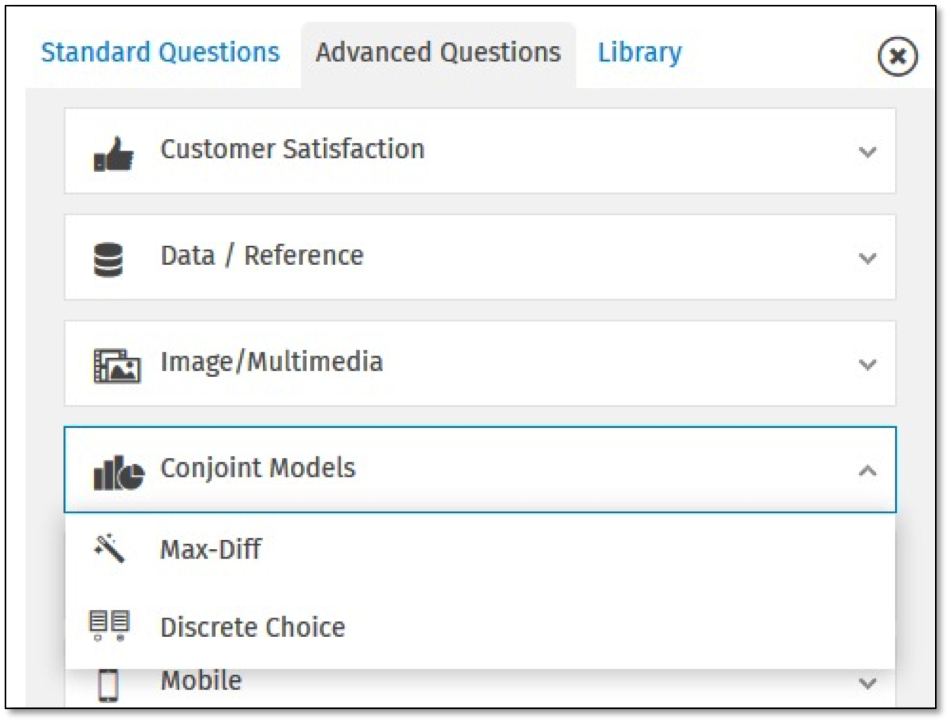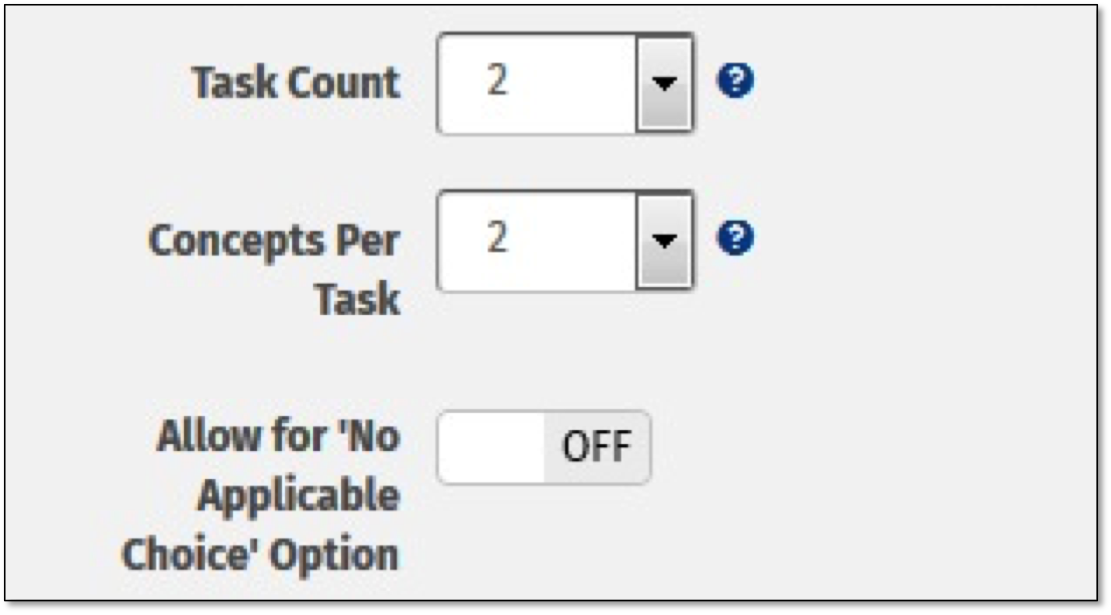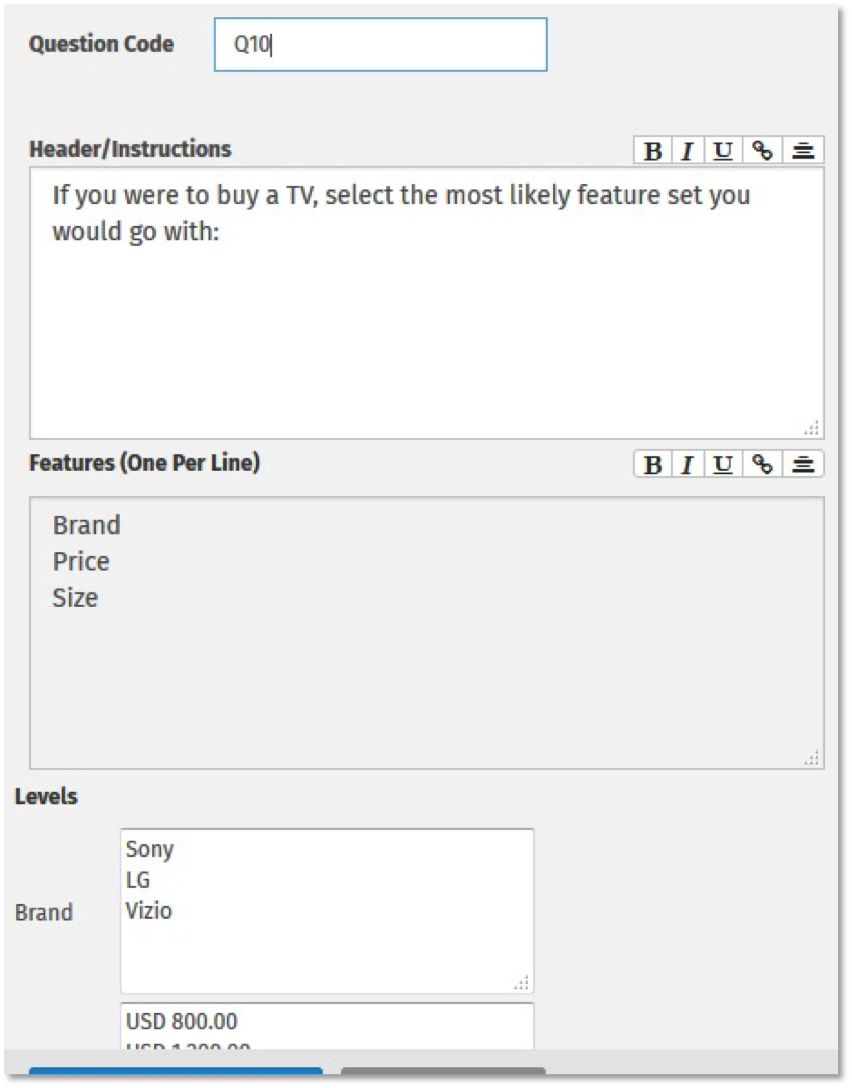Discrete Choice Experiments

To get our Discrete Choice Experiments started, we need to specify the Header/Instructions; Features and Levels; Tasks; Concepts per Task and whether or not to offer a “No Choice” option.
Your instructions should be clearly written and as concise as possible. Set reasonable expectations for your respondents by telling them that there will multiple tasks and that they should consider each task independently.
This screen allows you to specify both the features (aka attributes) and a number of levels per feature. Expect to set between 4 and 7 features. Prior survey or qualitative work can help establish both the features and levels to be used. Chris Diener, Ph.D. in his work suggests between 4 and 20 tasks depending on the complexity of the product or service. Another research suggests that after 15 tasks the number of dropouts goes up significantly.
It is necessary to establish the number of concepts seen on each task (screen). Three, plus a “no choice” option is practical and minimizes cognitive overload. The no choice option brings a sense of realism as it allows the respondent to express the opinion that none of the options on a task would meet their needs.
Features (attributes) need to be assigned one of three attribute types:
- Cost/Price
- Brand
- Other

In the last post, we reviewed the benefits of various experimental designs. The researcher would need to select a design appropriate for the research questions at hand. In practice, d-optimal works across a wide range of product and service scenarios.
Discrete choice exercises, experiments, and discrete choice analysis are time-consuming, that is a given. As such you should consider limiting the number of non-DCM questions in the survey. Profiling questions and perhaps a few others should be the limit. Here is a Discrete Choice Modeling Example you can review.
The in-platform reporting in QuestionPro allows the researcher the ability to measure attribute importance, create profiles (which product combinations are the best and worst), simulate market share, and estimate price elasticity, hence with Discrete Choice Model Understand What’s Important In Consumer Decision-Making Process.








